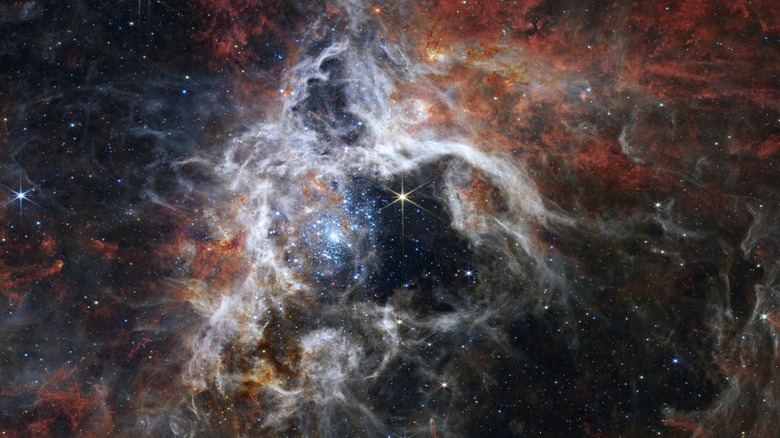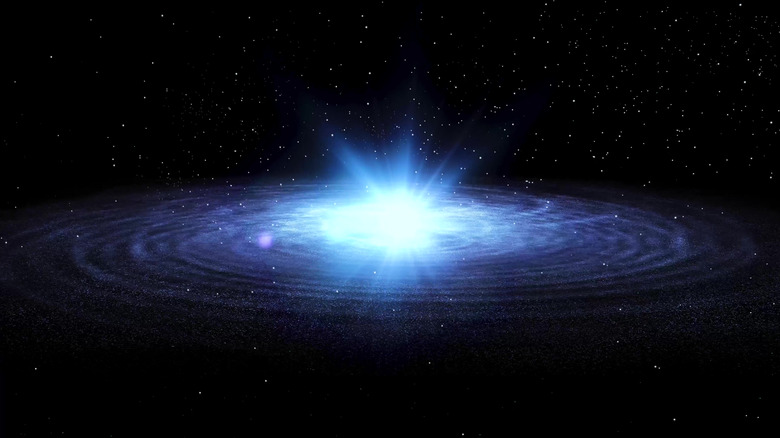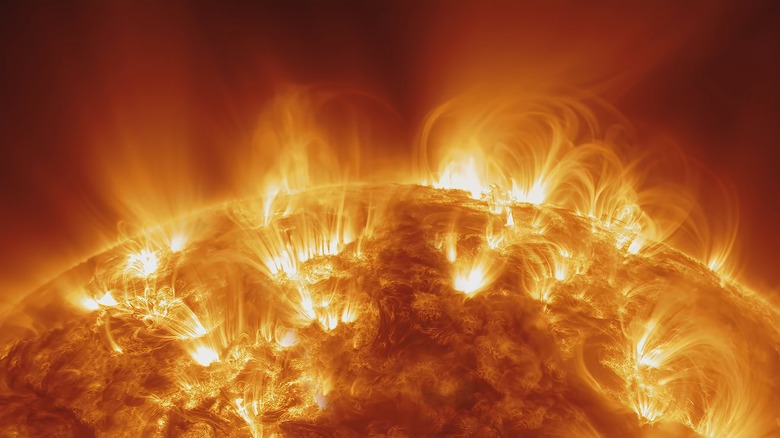The Largest Known Star In The Universe Makes The Sun Look Like A Grain Of Rice
Nestled in the Large Magellanic Cloud, a nebula located just outside the Milky Way Galaxy, lies what may be the largest known star in the entire Universe. This star, named R136a1, is located around 150,000 light years from Earth (via Phys.org). R136a1 was originally discovered 60 years ago by a team of astronomers at Pretoria's Redcliffe Observatory, who published their findings in the Monthly Notices of the Royal Astronomical Society in October of 1960.
New research of R136a1 was published in August of this year after a team of astronomers led by Venu Kalari of the Gemini Observatory studied the cluster in which it is located. They were able to take pictures of the star, allowing them to make new estimates about its size. Their findings, which were published in The Astrophysical Journal, shed new light on the star, which may be representative of how the largest stars in the Universe behave.
Astronomers originally estimated R136a1 to be much larger than it is
When R136a1 was first discovered, is was originally estimated to be around 250 to 320 times the mass of our Sun (via Science Alert). This was fascinating to scientists, who previously thought that the maximum mass of a star was much smaller. This maximum mass, known as the Eddington Limit, is the theoretical point where stars would have such a high luminosity that they would blow off their outer layers (via Britannica). According to research published in Nature, the Eddington Limit is estimated to be around 150 times the mass of the Sun.
The research conducted by Kalari and his team found that the original estimates of R136a1's size were blown out of proportion. According to Phys.org, the new estimates created by the team place the star somewhere between 170 to 230 times the mass of our Sun, a much more reasonable estimate. Don't be fooled into thinking this makes R136a1 any less impressive; it's still the most massive star ever found in our Universe (via NOIR Lab).
R136a1 may represent the largest stars in the Universe
R136a1 is not only the largest star discovered in our Universe so far, but it may accurately represent how all stars of this mass behave. Stars form in a variety of different sizes, from red dwarfs to blue-white super giants (via ESA Hubble). If astronomers are able to learn more about super giants like R136a1, including how common they are, it can help us understand how they form, according to Phys.org.
Understanding how massive stars like R136a1 form can help us learn more about some of the heavier bodies in our Universe, which come into existence through supernova explosions (via NASA). According to Interesting Engineering, up to 80% of elements heavier than iron come from massive supernovae. These new findings about R136a1 may aid astronomers in finding other massive stars and remnants of supernovae that have occurred in the past.


